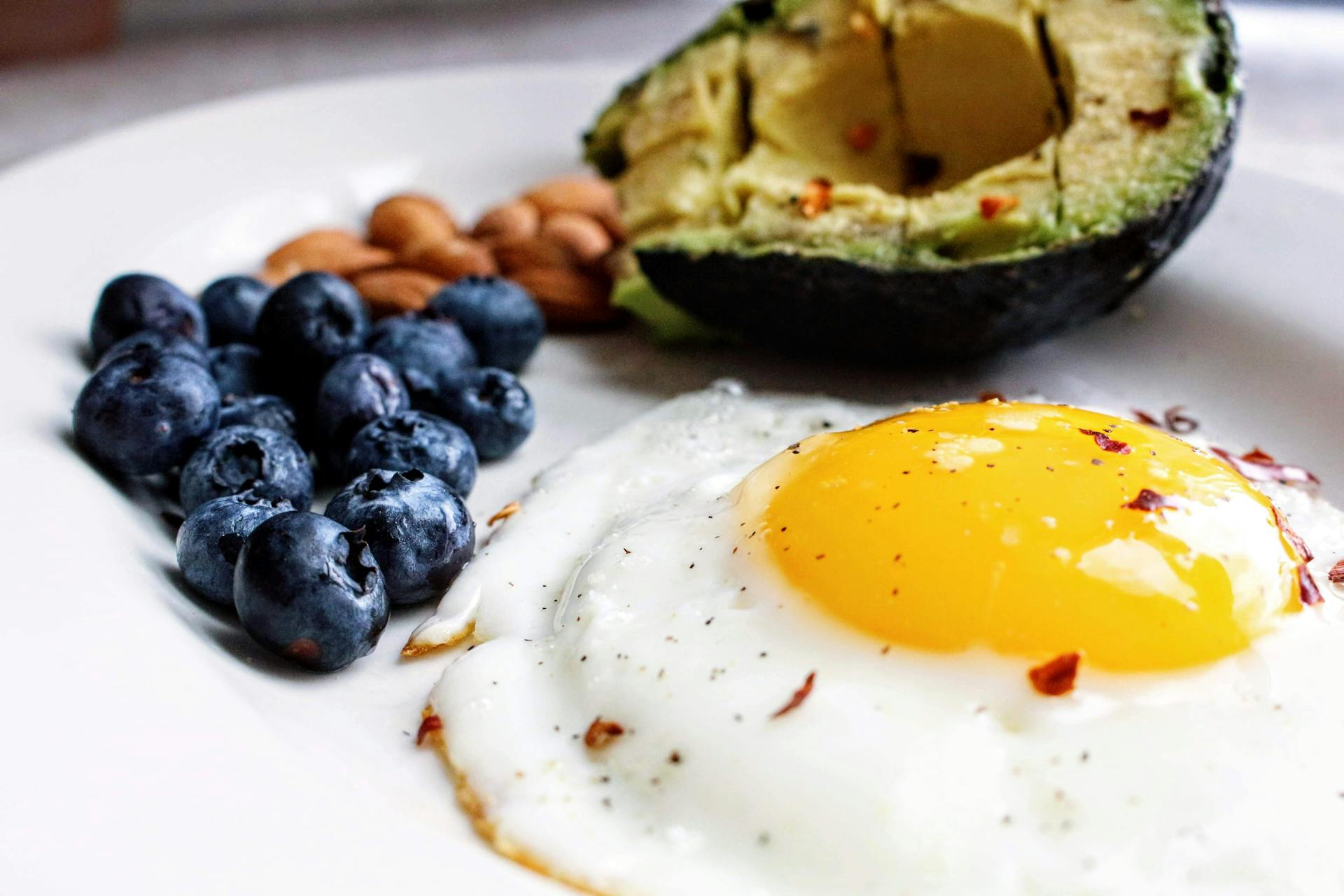Intermittent Fasting vs. Keto Diet: Which Is Better?

Richard Schmidt is a dedicated intermittent fasting advocate and retention specialist with a deep pa...

With Fastic, millions of people have achieved their desired weight, overcome disease and regained their quality of life.
Today, with many dietary options available, choosing an approach that fits into your lifestyle in every aspect can be quite overwhelming, even more so when you have specific objectives.
Here, we will discuss the differences between intermittent fasting and the keto diet, helping you better determine which dietary approach is ideal for you. Intermittent fasting versus the keto diet — is one better than the other? Can you combine intermittent fasting and the keto diet? Which one has more drawbacks?
What Is Intermittent Fasting?
Intermittent fasting is based on alternating periods of eating and fasting during the day. Unlike the keto diet, fasting focuses on when to eat and does not impose dietary restrictions on what or how much food you can eat.
A few of the most known intermittent fasting regimens are:
16:8 method: Involves fasting for 16 hours and an eating window of 8 hours.
20:4 method: Similar to the 18:6 plan but more strict. Requires eating during a 4-hour window and fasting the other 20 hours of the day.
5:2 diet: Consists of eating as you normally would for five days and restricting calorie intake to 500-600 calories on two non-consecutive days.
It is important to note that some fasting plans, such as the 5:2 diet, do impose calorie intake limitations.
Are you still unsure of what intermittent fasting plan is right for you? Take the Fastic quiz to find the right fasting plan. Answer straightforward questions about your dietary preferences, lifestyle habits, and goals, and Fastic will customize a fasting plan just for you. With Fastic, you’ll receive support every step of the way, including timely reminders, dietary advice, and tracking tools.
Benefits of Intermittent Fasting
Fasting offers numerous benefits, including:
Weight loss: Limiting calorie intake to specific timeframes promotes ketosis, a metabolic state in which the body burns fat for fuel instead of sugar.
Improves metabolism: Enhancement of cellular repair, increasing insulin sensitivity, and promoting the production of human growth hormone, vital hormones involved in metabolic regulation.
Reduces risk of heart disease: Improves blood lipid profiles, reduces inflammation, lowers blood pressure, and enhances insulin sensitivity, all contributing to cardiovascular health.
Potential Drawbacks and Challenges of Intermittent Fasting
Like any other dietary approach, intermittent fasting also comes with potential disadvantages. The most prominent challenge is hunger, especially during the initial adjustment period. Depending on the chosen fasting method, periods without food consumption can be quite difficult to endure. Additionally, a change in eating times can interfere with social and usual lifestyle habits.
What Is the Ketogenic Diet?
The ketogenic diet consists of consuming a fairly low amount of carbohydrates and eating more fat and protein-rich foods. Carbohydrates are replaced by fat for energy, allowing the body to enter a state of ketosis. As the body burns down fat, it produces ketones, the main energy source for your brain and body.
The key characteristics of a ketogenic diet are:
High fat: an average of 70-80% of daily calories come from fat.
Moderate protein: 10-20% protein intake to preserve lean body mass without disrupting ketosis.
Low carb: 5-10% intake, typically less than 50 grams of carbs per day, and can be as low as 20 grams.
*Percentages and amounts can vary.
Benefits of the Ketogenic Diet
The keto diet is known for offering the following benefits:
Weight loss: Ketosis promotes the burning of stored fat, which increases metabolic rate and fat oxidation contributing to weight loss. Moreover, high-fat foods can be more satisfying, leading to lower calorie intake.
Improve blood sugar levels: Reduced carbohydrate intake diminishes glucose levels. Decreased blood glucose leads to improved insulin resistance, lowering the risk of insulin resistance-related conditions.
Enhance mental clarity: Ketones (produced during ketosis) provide a stable energy supply to the brain. Moreover, studies suggest that ketones positively impact brain cells and improve mitochondrial function, enhancing cognitive performance.
Potential Drawbacks and Challenges of the Keto Diet
A common side effect of the keto diet is the “keto flu”. It comes during the initial adaptation period, with symptoms like fatigue and headaches. Another challenge of the keto diet is maintaining it long-term due to its severely restrictive methodology. Lastly, and not at all surprising, nutrient deficiencies may surge due to the restriction of fiber, vitamins, and minerals.

Comparison of Pros and Cons: Intermittent Fasting vs. Keto Diet
Even though these two dietary strategies lead to similar health benefits, their advantages and disadvantages differ. Let’s compare the pros and cons of intermittent fasting and the keto diet.
Intermittent Fasting
Pros
Focuses on when to eat, not how much, meaning it does not require counting calories.
Different fasting protocols allow for flexibility.
Enjoyable approach where you don’t have to change your regular diet (unless you want to).
Cons
Possible overeating during eating windows.
Inadequate protein intake and exercise may lead to muscle loss.
The initial stages can induce irritability, fatigue, and hunger.
Keto Diet
Pros
High-fat content helps keep you feeling full and satisfied.
Provides a steady energy supply for prolonged physical activities.
Strict diet helps abstain from processed foods, encouraging healthy homemade meals.
Cons
Dietary limitations can cause nutrient deficiencies.
An intense restrictive diet makes it difficult to sustain long term.
Potential constipation due to low fiber intake.
Intermittent Fasting versus Keto Diet: Evaluating Long-term Sustainability and Effects
Between the keto diet and intermittent fasting, the keto diet has been labeled as unsustainable in the long term because of its severe food restrictions, imminent risk of nutrient deficiency, and increased risk of kidney stones and osteoporosis. Typically, individuals follow the keto diet for 2 to 3 weeks to 6 to 12 months, although prolonged continuation (beyond 6 months) is not advised without close medical supervision. Due to its drastically restricted diet, assistance from a dietitian is recommended to minimize nutrient deficiencies.
On the other hand, intermittent fasting is not a single regimen, it encompasses various approaches differing in fasting times, eating patterns, and overall duration. Compared to the keto diet, fasting allows you to modify your fasting approach whenever (and however) necessary.
A six-week water fasting study showed that prolonged fasting can lead to short-term weight loss, increase ketones, and consistently reduce blood pressure. Although numerous studies have been conducted on the effects of fasting, there aren’t many on its long-term effects.
Can You Combine Intermittent Fasting and Keto?
Yes, you can combine intermittent fasting with any type of diet plan. Merging the ketogenic diet with intermittent fasting can enhance metabolic benefits, such as weight loss, chronic disease management, and improvement of health markers.
How to Combine Intermittent Fasting and the Keto Diet?
If you are wondering how to do intermittent fasting on a keto diet, you’ll be happy to know there isn’t much science to it. You simply choose an intermittent fasting protocol and follow a keto meal plan during the eating windows. Fastic has fasting-friendly recipes that adapt to your dietary preferences, whether you follow the keto diet or any other eating plan.
There are various intermittent fasting plans to choose from, therefore opting for the one that adjusts comfortably to your daily routine is ideal. During the eating window consume keto-friendly meals rich in fats and moderate in protein, ensuring nutrient ratios remain within the ketogenic parameters. It’s that simple!
What to Look Out For
There are certain potential challenges of combining intermittent fasting and the keto diet. Hence, it is crucial to be mindful of some aspects to protect your health and ensure overall success. These include:
Nutrient density: Focus on consuming nutrient-dense foods to meet nutrient recommendations, especially since keto-friendly foods lack specific nutrients.
Adequate electrolyte levels: Consider sodium, potassium, and magnesium supplements or fasting-friendly electrolyte beverages to prevent deficiencies.
Energy levels and adjusting your fasting approach: Pay attention to energy levels. Adjust eating windows if necessary to avoid fatigue or low energy levels that may impact your overall performance.
Hydration: Sufficient hydration levels during eating and fasting hours to support metabolic processes, and prevent dehydration. Drinking lemon or cucumber water during fasting won’t interfere with your body’s fasting state.
Intermittent Fasting vs. Keto Diet: Choosing the Right Approach for You
Knowing the good and the bad from each dietary approach, you can better determine which one goes better with you.
To choose a dietary approach you must consider the following:
Lifestyle implications: Assess which one will adapt better to your everyday life and what modifications you are willing to make to adapt.
Health conditions: Whether it's fasting or the keto diet, not everyone is fit for it. These approaches require considerable modifications that can potentially impact your health.
Personal preferences: Evaluate dietary restrictions, meal timing flexibility, and food options. Additionally, consider complementing your dietary approach with dietary supplements, exercise, meditation, etc.
Objectives: Reflect on and set your goals, whether it is weight loss, improving metabolic health, treating specific medical conditions, or simply enjoying a healthier lifestyle.
All in all, when it comes to intermittent fasting versus the keto diet, there is no definitive better option. It ultimately depends on what works best for each individual, and whether the sacrifices needed are worthwhile for the benefits gained. Embark on your journey to wellness and download Fastic now.
Disclaimer: It is advised to speak with a health professional before beginning intermittent fasting or a diet program. There may be side effects for people with certain medical conditions.
With Fastic, millions of people have achieved their desired weight, overcome disease and regained their quality of life.
Take the Quiz